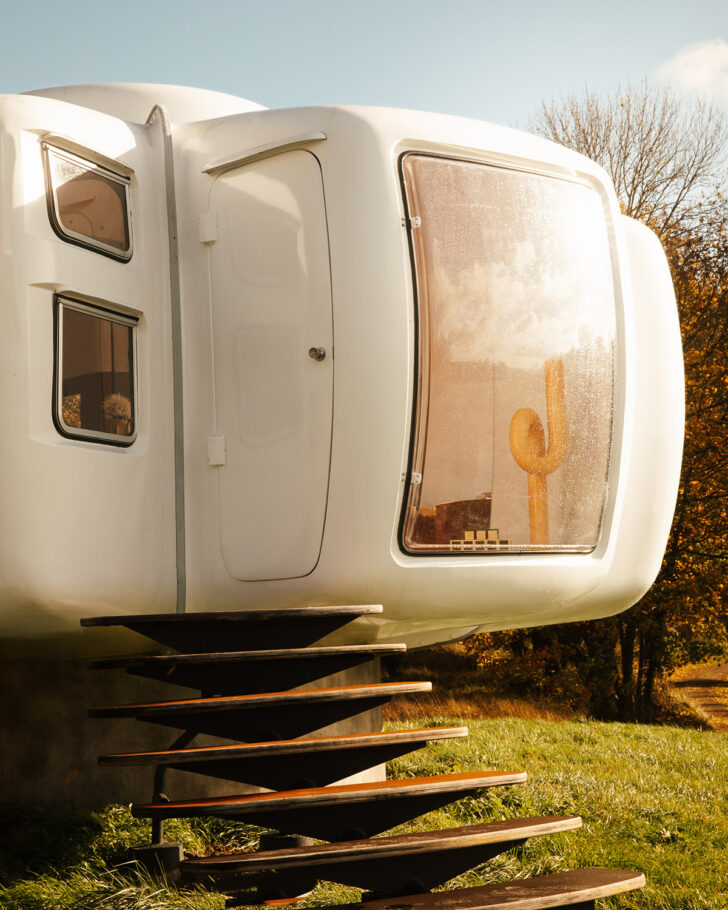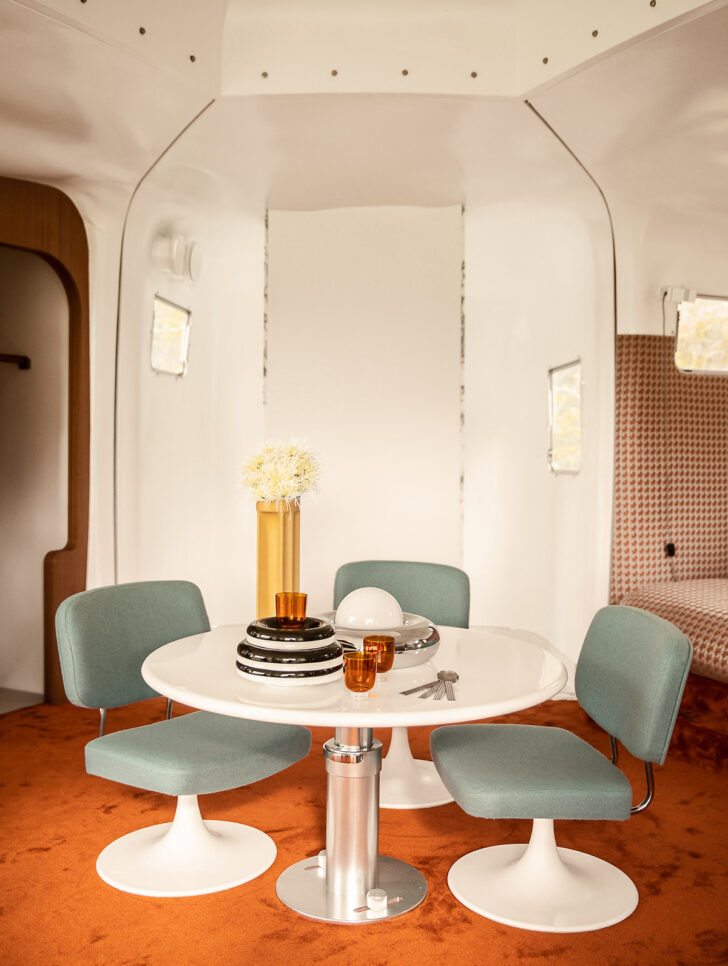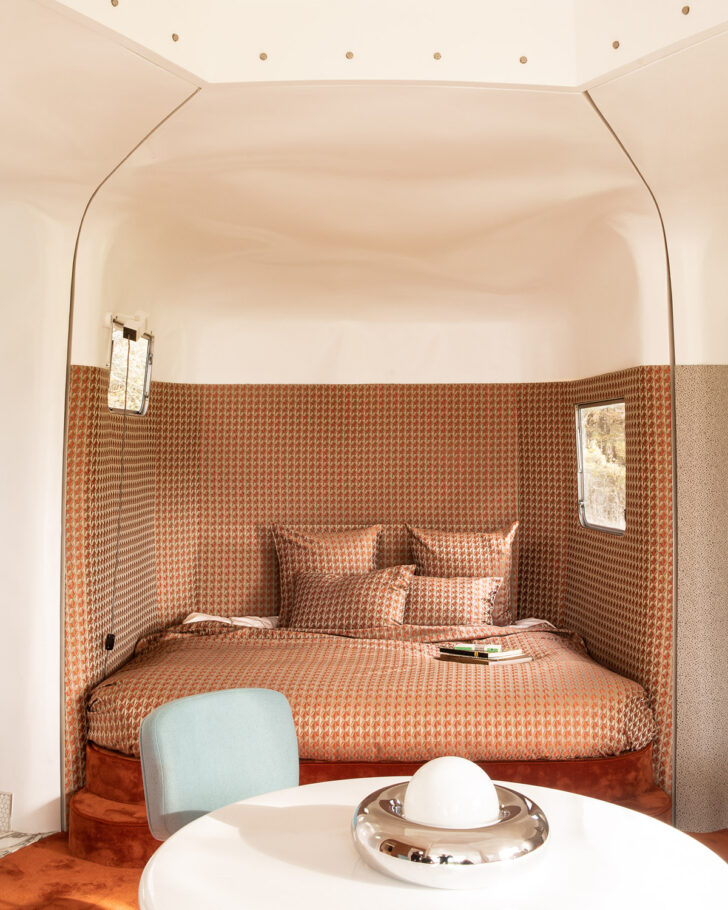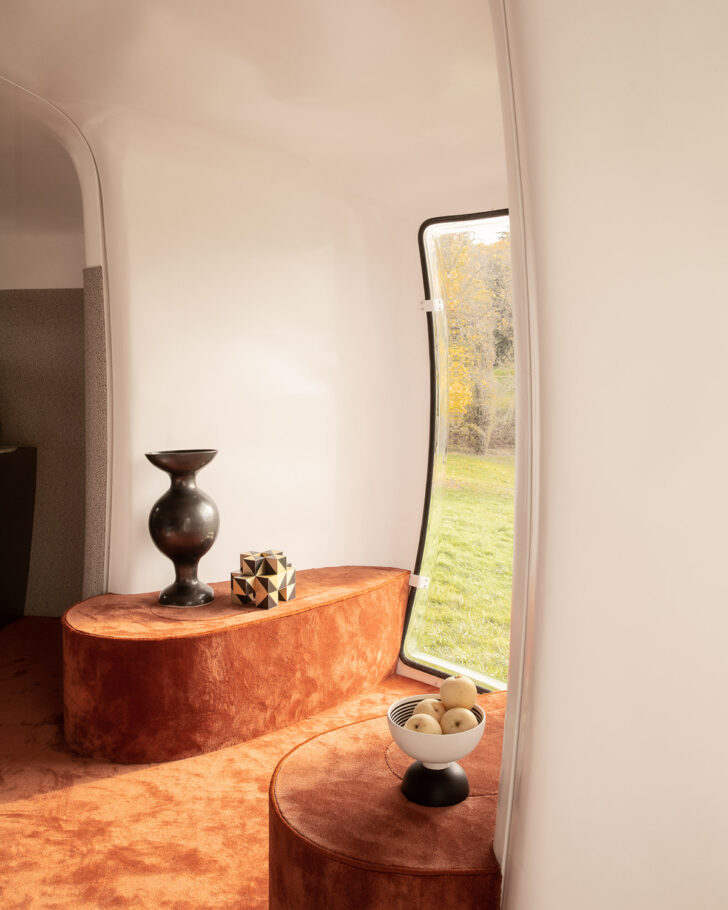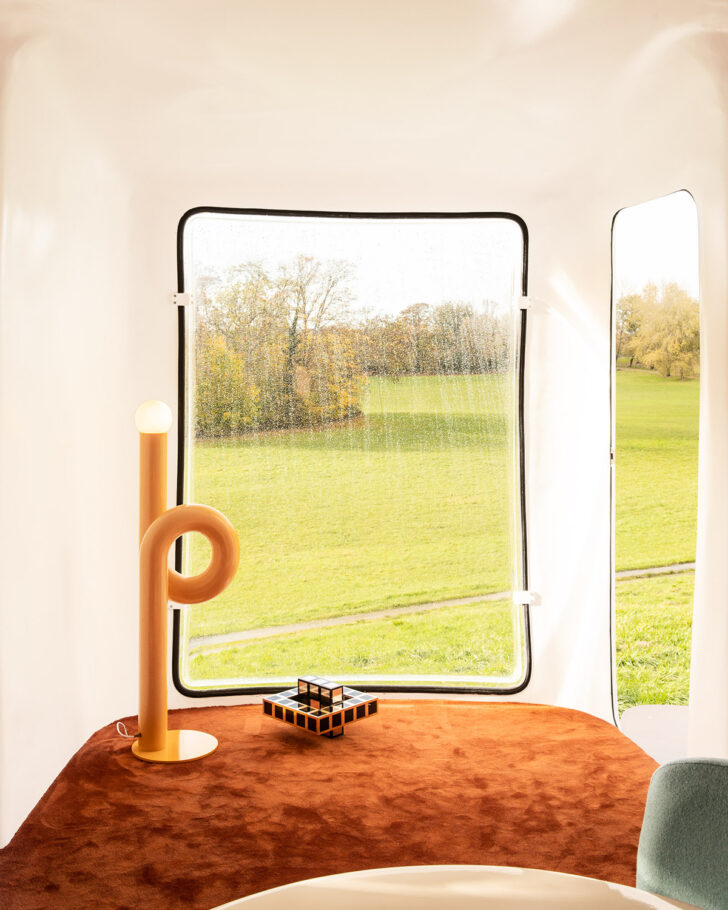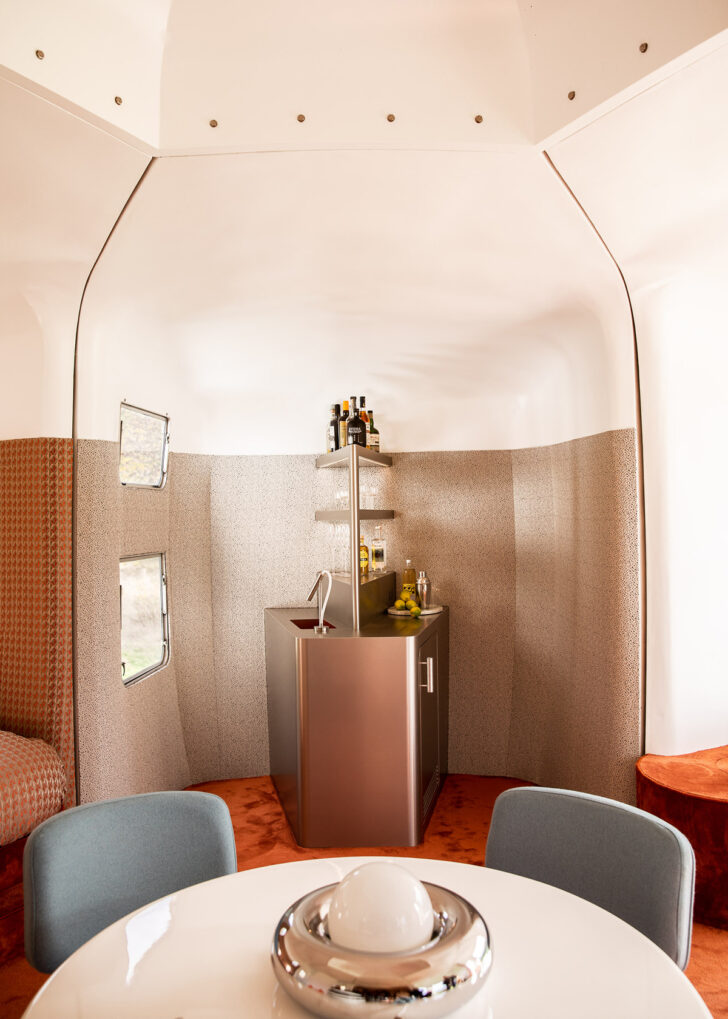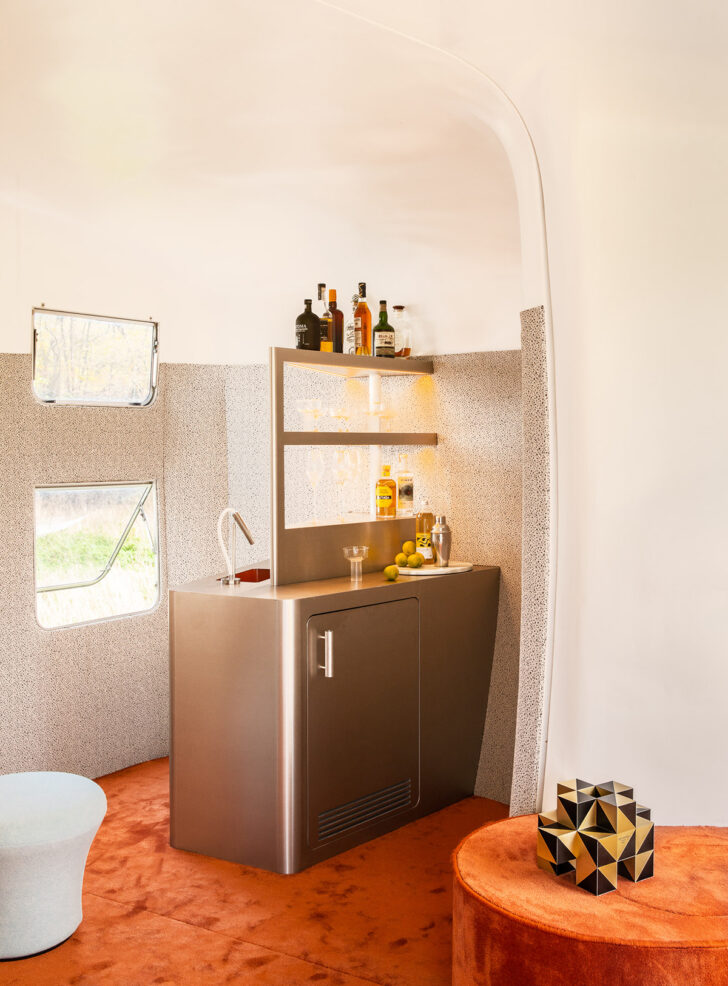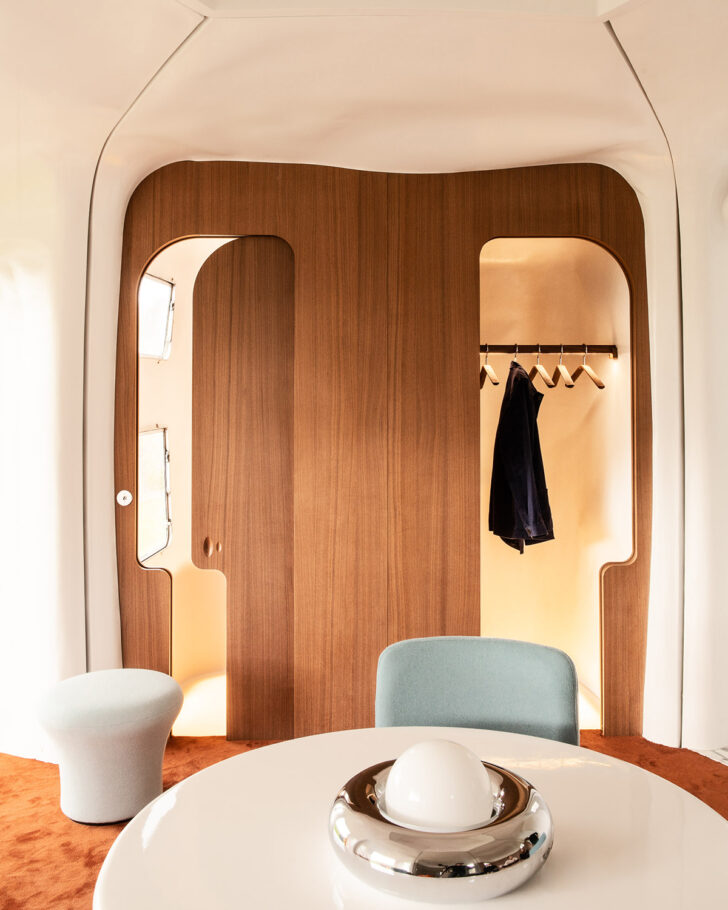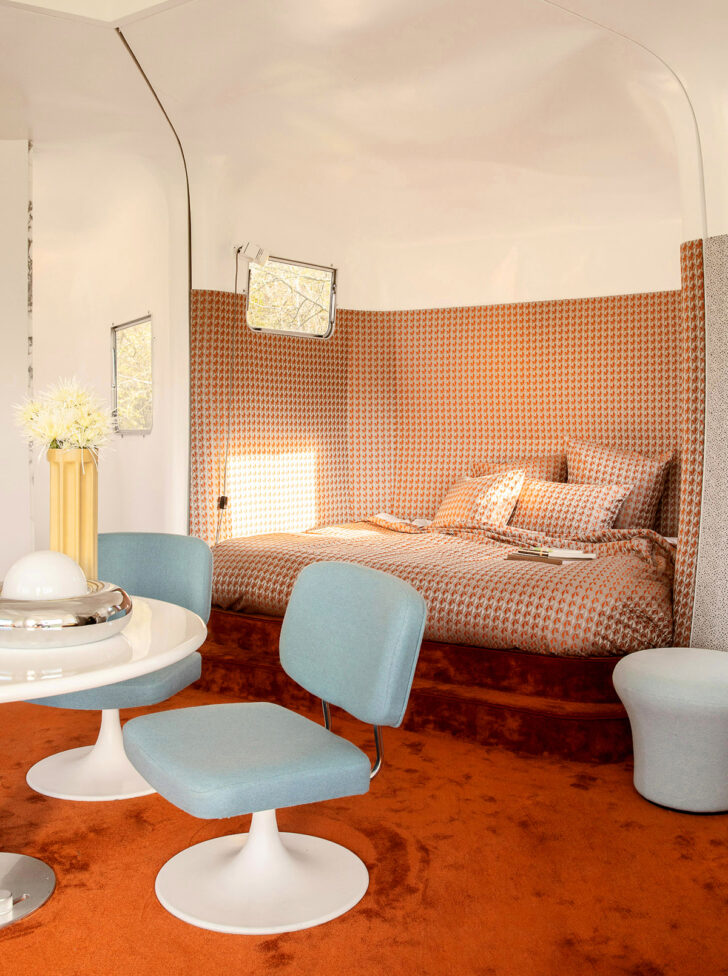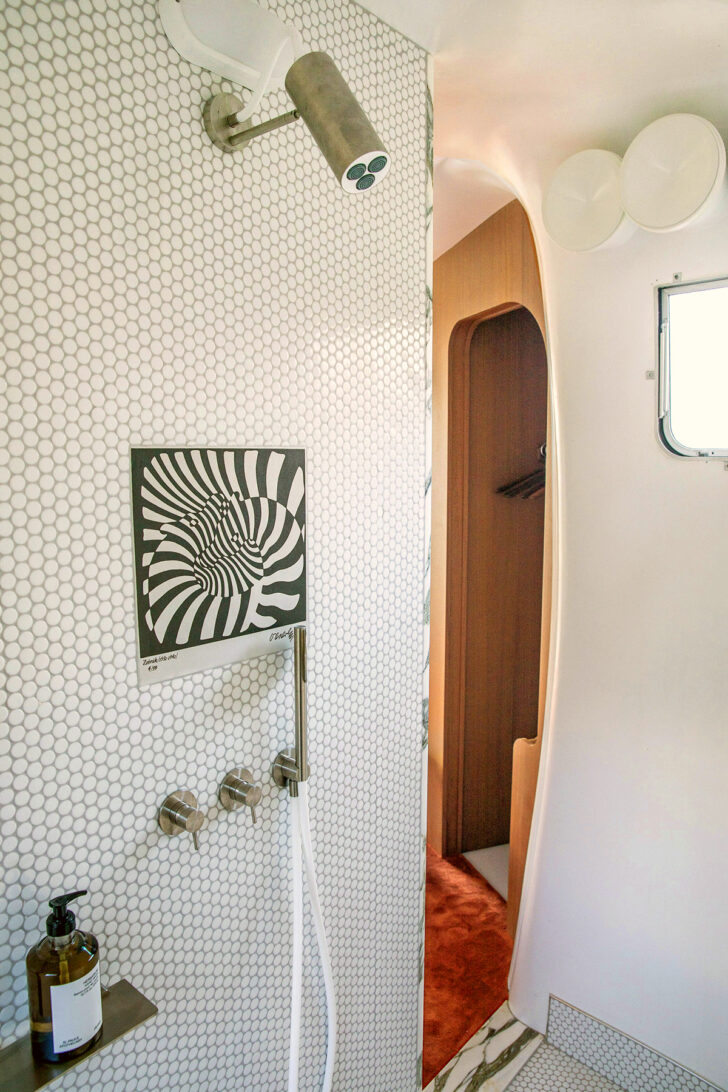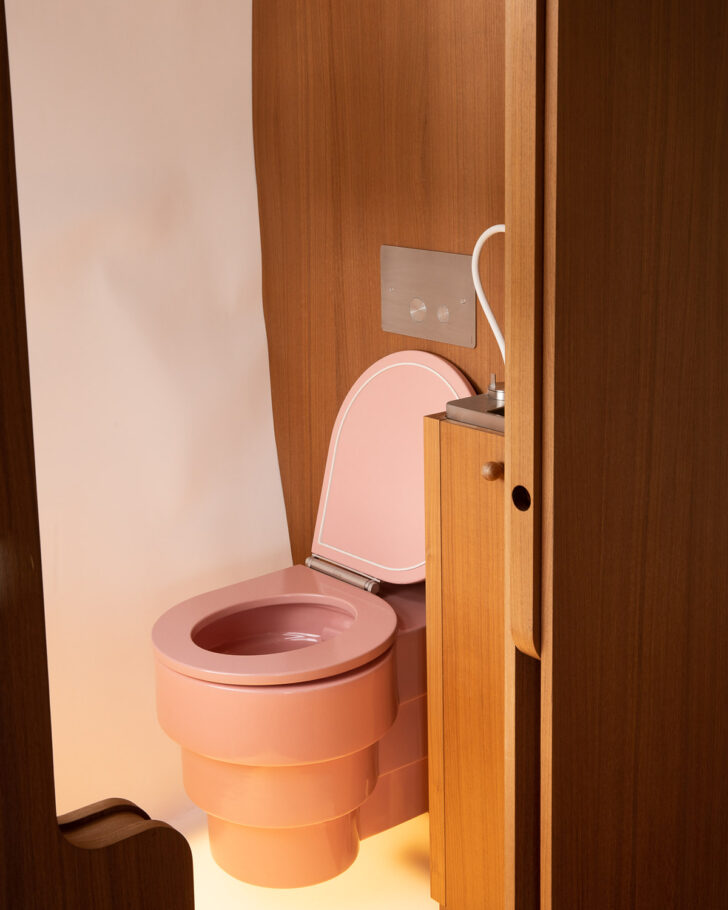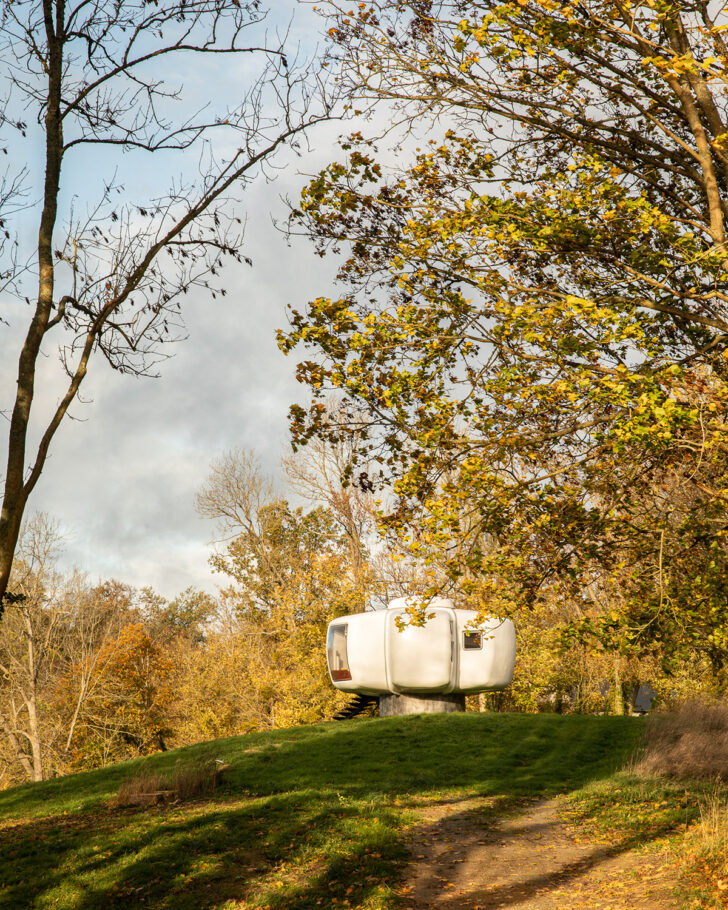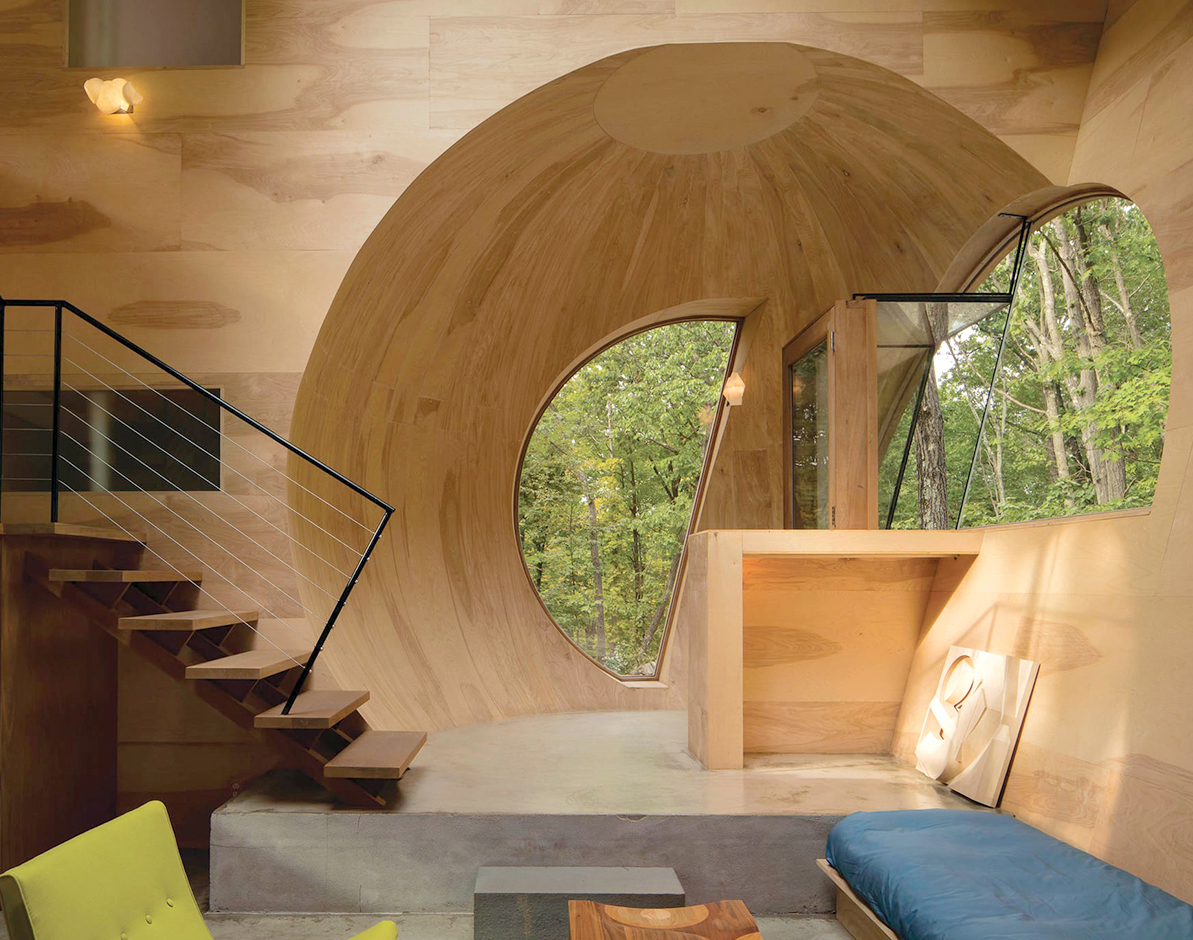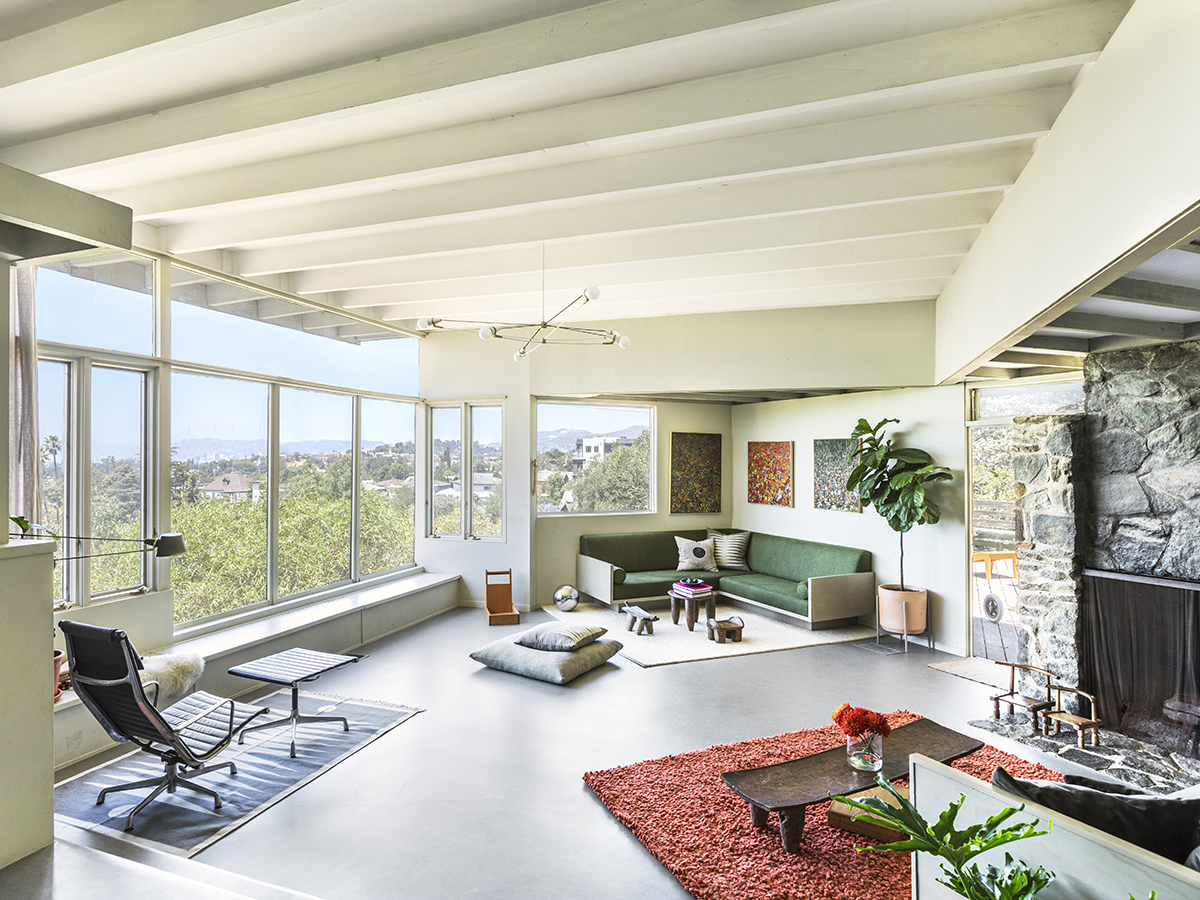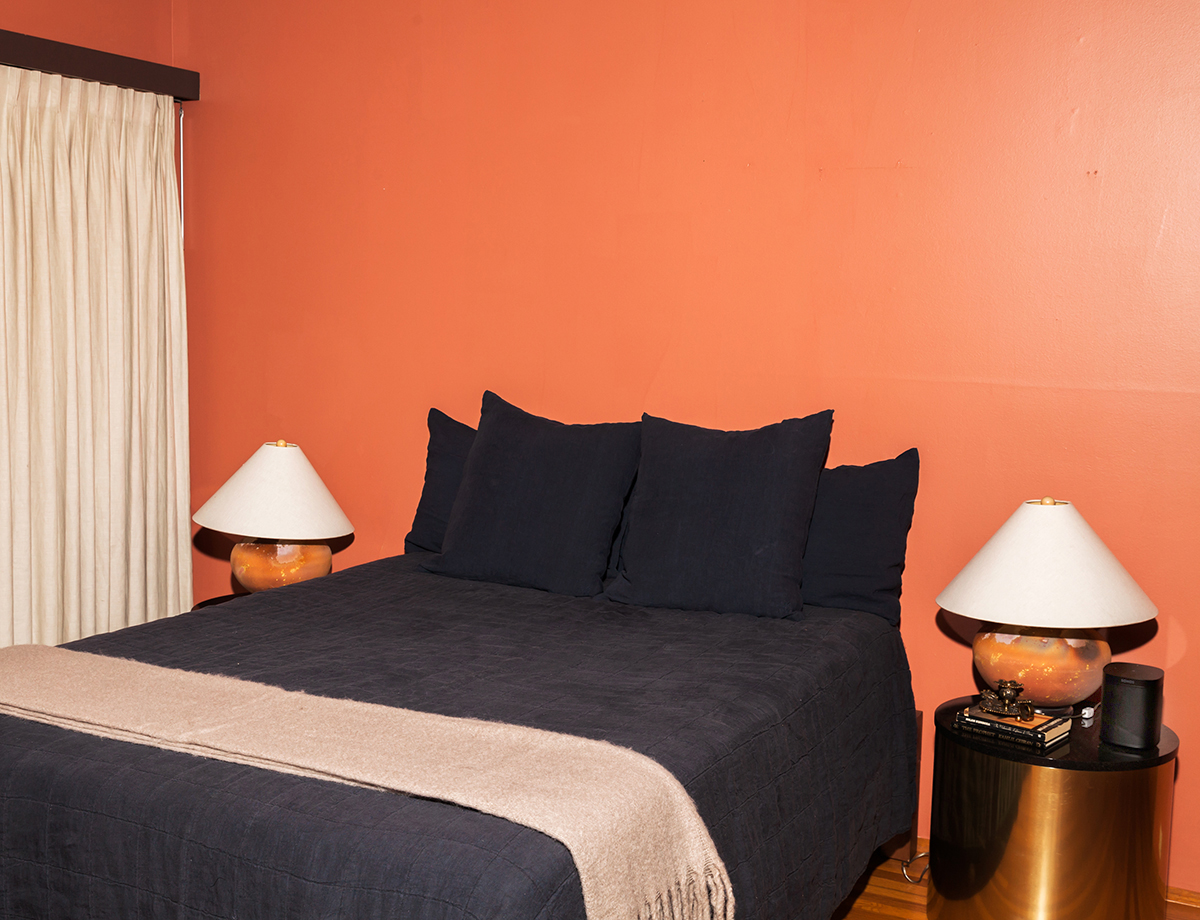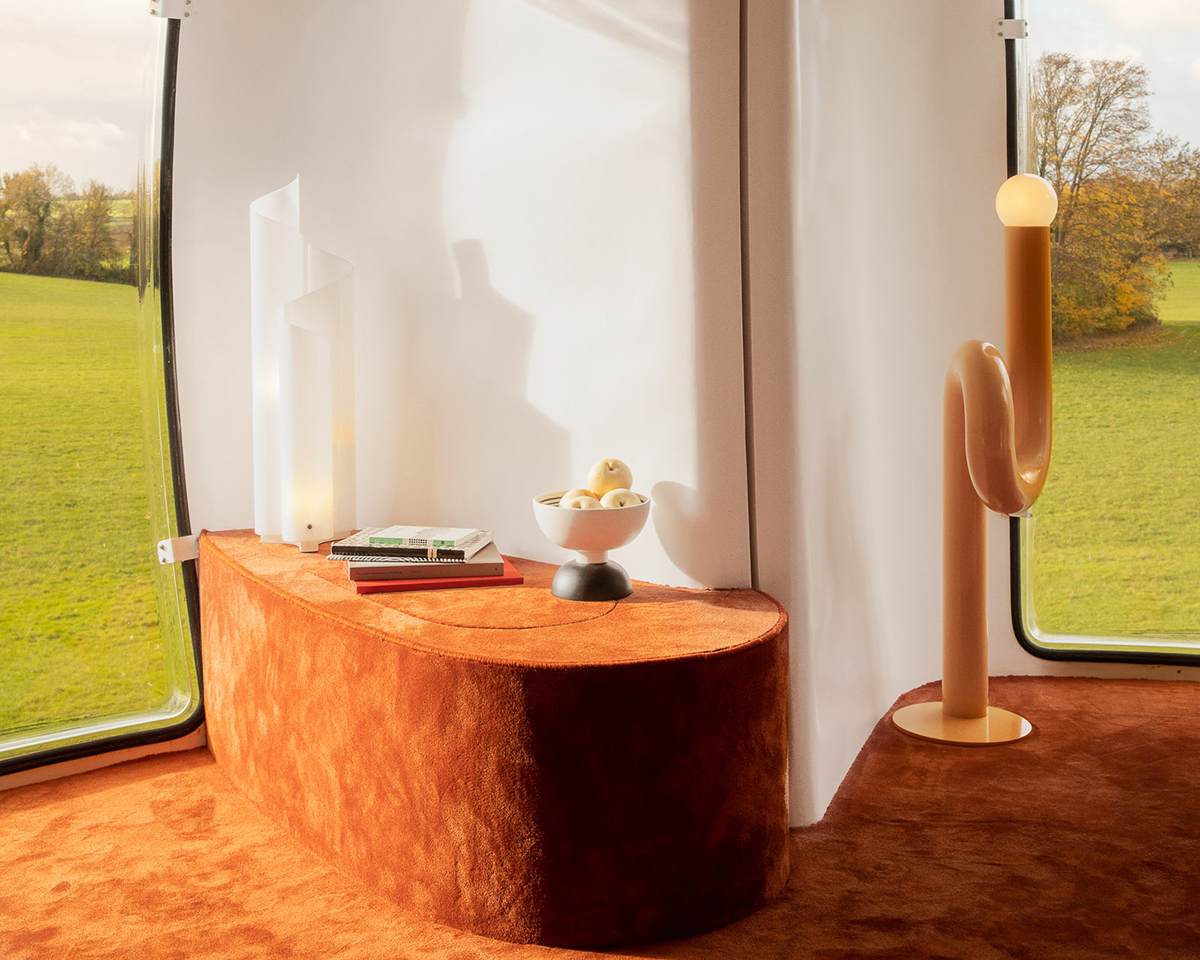
05.03.23
Interiors
This Prefab Bubble House in the French Countryside is Giving Elevated Airplane Interior
In 2014, a daring collector visited an auction and left having bought an authentic 1968 bubble house by the late French artist and architect Jean-Benjamin Maneval. The prefabricated structure, made from assembling six reinforced polyester shells with large Plexiglas windows, now offers a view of a former stud farm in the Véxin area of France where it sits. The bubble house arrived empty, so its owner called on his good friends at KIF, an interdisciplinary creative studio formed by Guillaume Furet and Mélissa Louis, to be artistic directors of the interiors. Their vision for the project was to design a “capsule of conviviality, a bubble of comfort in the middle of nature, based on a hotel suite” to be named Maison Bulle. To bring their idea to life, KIF recruited Dorothée Meilichzon, head of CHZON, an agency known for designing hotels, bars and restaurants, and gave her the keys.
The entire space is only 385 square feet, so each shell had to have a function. “We summarized everything you’d have in a home but imagined things smaller,” Meilichzon says. “There’s an entrance hall, a bed, shower, restroom, cloakroom, kitchen counter, sofa and dining-living area with a table that can be turned into a coffee table.”
Inspired by natural forms — eggs, fruits, air bubbles — Maneval’s design omits any straight lines. The same went for the interiors. Working within the curved shells was complicated and everything had to be made completely bespoke, made to measure inch by inch. The design is a tribute to the late ’60s when Maneval bubble houses were produced. “It’s an era of boldness and fun,” says Meilichzon. “Lush carpets, patterns, organic shapes, bold colors.”
Guests are welcomed through the entrance shell which hosts a loopy lamp by Axel Chay. Plush orange carpet runs throughout five of the six shells and up onto the rounded benches of the living room shell lit by a Chimera lamp by Vico Magistretti, designed in 1969. In the center of the structure is a meeting point with a table and four vintage armchairs. The graphic Edinburgh Weavers fabric used for the bedding extends up the walls of the bedroom shell; it was selected by the house’s owner, a fervent collector of Vasarely, a leading figure of the Op-Art movement who collaborated with the textile company in the sixties.
The all-white shower shell is finished in Arabescato marble and pastille mosaic next to a shell with a sliding walnut partition and luminous floor split between a dressing cubicle and a toilet by French company, Trone. Tibor fabric lines the walls of the bar shell where custom-made stainless steel furniture provides a spot to mix a drink before reclining on a Mushroom pouf by Pierre Paulin (another design from the ’60s) and perhaps spotting deer or wild boar out the windows.
PHOTOS BY KAREL BALAS
